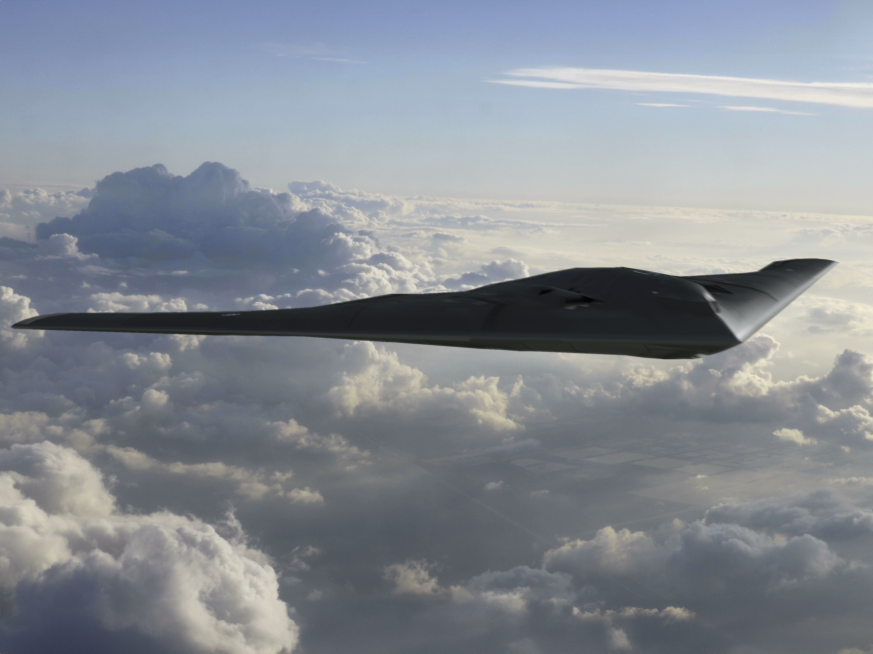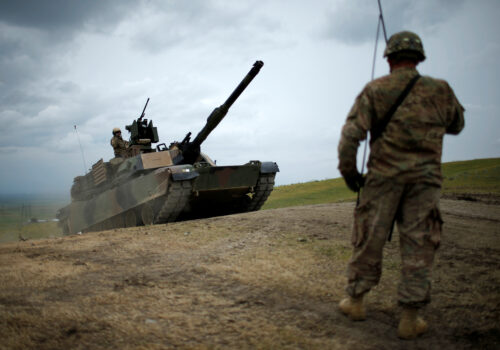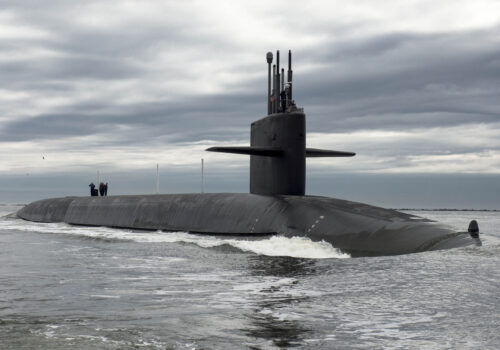Invest in space or lose the high ground
This issue brief is part of the Scowcroft Center for Strategy and Security’s National Defense Strategy Project, outlining the priorities the Department of Defense should address in its next NDS.
Executive summary
Space will be a decisive factor in shaping the direction—and possibly even the outcome—of the next major-power war. Ever since humanity first ventured beyond Earth, the ability of air forces—and now space forces—to affect military activity on the ground has only grown. Since World War II, achieving air superiority, or at least denying it to the enemy, has been essential for successful surface operations. Today, this same logic holds for space: control of the air enables dominance on the surface, but space superiority now underpins dominance in both air and surface domains (land and sea).
In future conflicts, militaries that achieve space superiority will be able to detect adversary activities across land, sea, and air; strike platforms and advanced long-range weapons will engage targets at unprecedented distances by leveraging space-based sensors, communications, and command and control systems; and space power will be essential for deterring strategic attacks on the US homeland and defending US territory if deterrence fails.
The Department of Defense’s (DoD) emphasis on Combined Joint All-Domain Command and Control reflects this reality to a certain extent. Still, the current Space Force budget is insufficient to establish space superiority. In fact, a lack of investment is putting not only US space ambitions, but the effectiveness of the broader military, in jeopardy. Addressing this problem requires increasing the Space Force budget by billions of dollars. If Congress is unwilling to raise the defense topline to accommodate these investments, then the importance of space is so critical that the DoD should make the necessary divestments from other parts of the military to fund the Space Force. Deterring the next war—and winning it if deterrence fails—requires a powerful Space Force that is fully resourced to succeed.
View the full issue brief
About the authors
Related content
Explore the program

Forward Defense leads the Atlantic Council’s US and global defense programming, developing actionable recommendations for the United States and its allies and partners to compete, innovate, and navigate the rapidly evolving character of warfare. Through its work on US defense policy and force design, the military applications of advanced technology, space security, strategic deterrence, and defense industrial revitalization, it informs the strategies, policies, and capabilities that the United States will need to deter, and, if necessary, prevail in major-power conflict.
Image: Antennas are pictured at Telespazio's Fucino space centre, in Ortucchio, close to the city of L'Aquila, Italy, April 9, 2024.REUTERS/Remo Casilli




